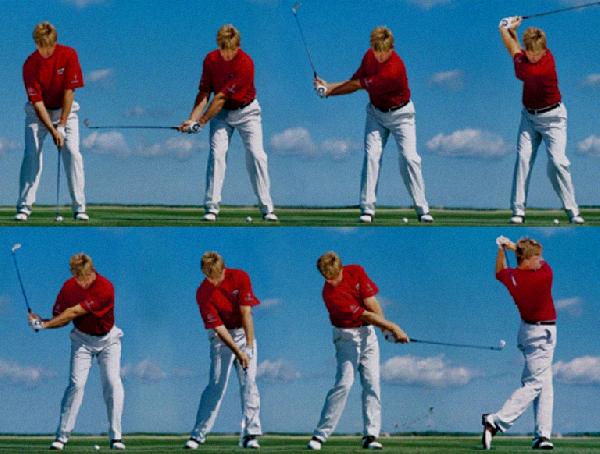I have always wondered why I occasionally shoot 10 strokes below my handicap index. Why can’t I just bottle that feeling and shoot under 80 in every round that I play. I finally discovered the reason while playing from the 5,400 yard tees instead of the 6,000 yard tees. As I age with less flexibility I should accept the fact that I just can’t generate the club head speed to keep up with the young bucks.
In a GOLF Blog written about Omar Uresti, a veteran PGA player, it stated that the biggest mistake golfers make as they age is that they try to compensate by swinging faster. Aging golfers lose distance as they lose their flexibility with every club in their bag. You need to accept that fact and age gracefully. When you try to compensate for your lack of flexibility and strength, you will tend to swing faster and lose control of your swing. Unfortunately the faster you try to swing the more slices and hooks you will create.
YOUR Mental Balance = Better Distance and Direction Control
I have also learned that there is a significant mental side to the equation for better golf. By selecting a club that you know can reach your target you can put your mind in a calm and relaxed state of mind that allows your body to swing with a relaxed backswing and downswing. Don’t try to fool yourself into believing that you can hit the same distance with each club that you planned to hit 10 or 20 years ago.
Change Your Mental Outlook to Avoid Over-swinging
- Choose a club that you know will easily reach your target.
- Make a CONTROLLED practice swing with every club and grip down for shorter distances.
- If you land in the rough, take your medicine and get out safely with a lofted iron.
- Slowdown your backswing for time to cock your wrist and press forward over your ball.
- Let your hips and shoulders rotate in your backswing to the limit of your straight leading arm.
- Enjoy a smooth release through your ball to a balanced finish. Think of Ernie Els swing.
- Realize that most poor shots are caused by over-swinging or not accounting for sloped ground.
- For pitch shots within 100 yards open your stance and put more pressure on your leading foot to ensure that you impact the ball before the ground.
- Choose your target line for every putt and learn from your last missed putt.
- Putt confidently to pass the hole by up to 2 feet with less break. Short putts never go in.
Build Confidence As You Play
Ignore powerful younger players. If you swing within your physical capability you will hit more fairways and greens in regulation. As your confidence grows, your shots will be more consistent and you will chip better and sink more putts. A positive mental attitude breeds success in golf. Practice with GOLFSTR+ to learn to swing every club within your limitations. Buy one today at www.GOLFSTR.com
Golf Truism #65: Every time a golfer makes a birdie, he must subsequently make 2 double bogeys to restore the fundamental equilibrium of the universe.







